Bar angles – seeing what you are feeling for
We are no longer building saddle trees, but we have two videos about how Western saddles fit horses available on our westernsaddlefit.com website.
We have written a lot about bar angles and why the numbers are meaningless between makers and how angles aren’t that simple. We have said that you need to feel for fit – you can’t see it in pictures. But what we haven’t done on this blog is show you just what you are feeling for under a saddle with regard to bar angles. So here are some pictures showing, with bare trees on horses, what you are feeling for under the saddle when you check it.
Like we have said numerous times, the “angle” of the bar can’t be measured on the tree or on the horse. But the concept of the angle matching the horse is very real – and it has to match all the way down the horse’s back (which is why twist is important). But for this post, we will concentrate on the “angle” at the front of the bars, because we have found that this is most important to get right.
First off you have to know where the bar in your saddle is and what you are feeling for. If the angles don't match – if the bar is at a different "angle" from the horse – where is it tight? The top or the bottom of the bar? This is vital to tell you if the angle is too wide or too narrow. Because too wide an angle will cause the saddle to feel too tight just like too narrow an angle will – just in a different place. And that is what you need to feel for.
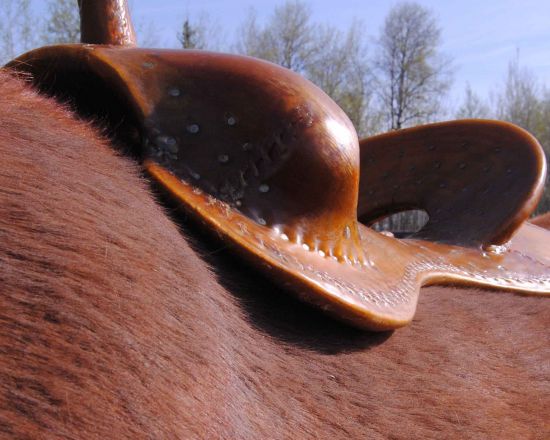
In this picture, the bar angle is too wide for the horse. You can see that the bottom of the bar is lifted off the horse while the top of the bar has a lot of pressure on it, especially the front bar tip. Some people might just feel the top corner and think that because it is tight, that the tree is too narrow - and then try a wider saddle, making the problem worse.
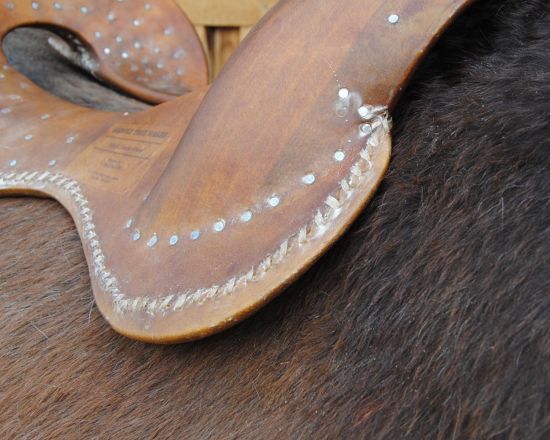
This angle is too wide for this horse as well, though not as dramatic as the other picture. You can see the bottom of the bar lifting off the horse while the top has contact. With weight in the saddle, the area that contacts will be a high pressure point on the horse.
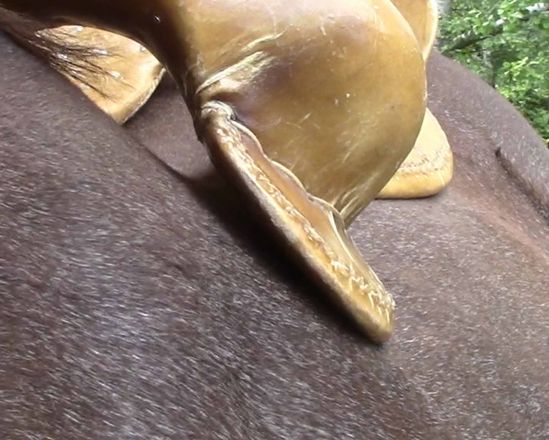
Here is a tree that has too narrow an angle for the horse it is on. You can see that the horse's back is flatter side to side and, in comparison, the bar angle is steeper. The result is that there is high pressure on the bottom edge of the bar while the top of the bar has no pressure because it isn't even touching the horse! There is very little surface area actually on the horse in this situation, so the saddle will not be stable. It may move forward and is very likely to roll side to side, especially when getting on. And you can understand with the rider's weight being principally on the bottom edge of the bar, that it would make a horse sore! This is a pretty extreme example, but in less extreme cases, you still have only the bottom of the bar on the horse and the inside of the top angling out from the horse.
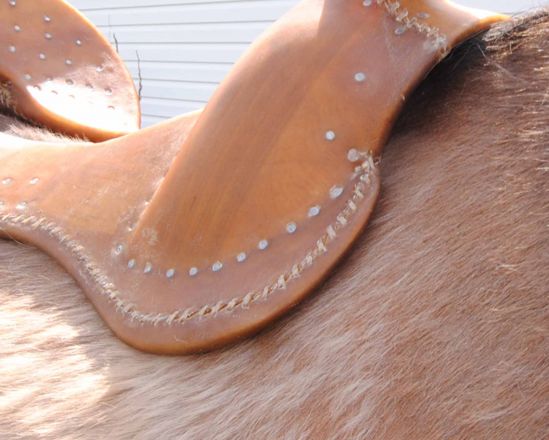
In contrast to the previous pictures, here's one where the bar angle matches the horse well. You can see that there is no gapping top or bottom and no high pressure areas top or bottom. This is what you are wanting to feel for under your saddle to see if the “angles” match.
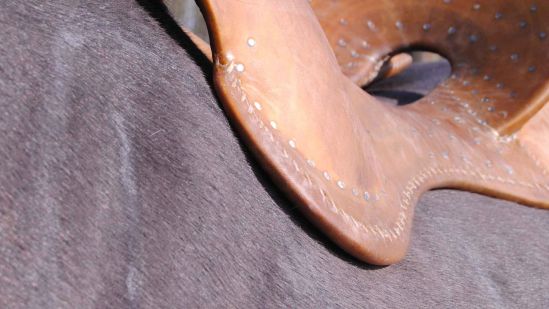
Here is another one. And yes, you really can feel this under your saddle!
When you know where the bar is and feel underneath it, you will be able to tell how well the angles match. You are checking for even contact from the top through to the bottom with no high pressure areas. You also need to check this all the way along the bar, because it can be correct at the front and wrong in the middle or the back of the bar. But this is a visual of what you are feeling for.
(By the way, if you are concerned about the gullet being too low, remember that this is a bare tree and padding will lift it substantially.)
